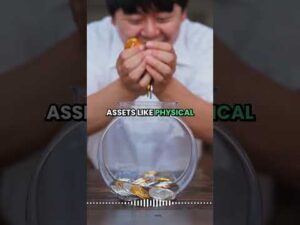Bitcoin operates as a completely decentralized system, with no provision for reversing payments or a customer support line for assistance in case of errors. When you assume self-custody of your Bitcoin, you bear sole responsibility for safeguarding your funds. Self-custody empowers you to have control over your funds without the ability of anyone to freeze them or prevent you from making desired payments. While self-custody offers significant advantages, it also entails a considerable level of responsibility.
The Risks of Self-Custody
One critical aspect of self-custody is the irreversible nature of transactions. If you mistakenly send Bitcoin to an incorrect address, there is no way to rectify the error. Moreover, if someone gains access to your seed phrase, they can essentially gain control of your funds, with no recourse to customer support for assistance. Losing your keys and seed phrase backups can result in the permanent loss of access to your wallet, similar to cash: once it's gone, it's irretrievable.
Types of Wallets
When managing your Bitcoin, you can choose from various types of wallets, each offering different levels of control over your assets. Here's an overview of the two primary categories:
Custodial Wallets
Custodial wallets, commonly provided by centralized exchanges, function akin to bank accounts, where you relinquish control of your funds to the platform. While they facilitate cost-effective transactions within the platform, they come at the expense of surrendering control over your funds. It's advisable not to store significant amounts of Bitcoin in custodial wallets and to transfer purchased Bitcoin to non-custodial wallets promptly.
Non-Custodial Wallets
Non-custodial wallets offer genuine self-custody, ensuring that only you have access to your assets. However, even within this category, there are distinctions:
Software Wallets: These wallets, also known as hot wallets, operate on mobile devices or computers, granting you control over your funds but potentially exposing your private keys to hackers. They are suitable for storing small amounts of Bitcoin for immediate use.
Hardware Wallets: Designed to safeguard private keys securely, hardware wallets are ideal for storing substantial amounts of Bitcoin. By keeping the private key offline, they mitigate the risk of unauthorized access and enable secure transaction signing.
Best Practices for Self-Custody
Here are essential steps to ensure a secure self-custody experience:
Verify Your Backups
Generate and securely store your seed phrase, which serves as the master key to your wallet. Verify your seed phrase during the setup process to mitigate the risk of losing access to your funds.
Test Transactions
Initiate a small test transaction to your wallet to confirm its functionality and security. Gradually deposit larger amounts after validating the receipt and spending capabilities of your wallet.
Secure Backup Methods
Never create digital backups of your seed phrase, as they can be susceptible to hacking. Store your seed phrase offline, using physical mediums like paper or steel, to minimize the risk of theft.
Additional Considerations for Multisig Wallets
For users of multisig wallets, ensure you backup not only the private keys but also the public keys associated with each wallet address. This precaution guarantees access to your funds, even if you lose some private keys.
Confidentiality
Exercise discretion regarding your Bitcoin holdings to minimize security risks. Avoid disclosing the extent of your Bitcoin ownership to mitigate potential threats and safeguard your assets.
Conclusion
Self-custody of Bitcoin may seem daunting initially, but by following best practices and utilizing secure storage methods, you can protect your funds effectively. Bitcoin offers unique advantages over traditional cash, such as recoverability through backups and enhanced security features like multisig wallets. By educating yourself and implementing proper security measures, you can confidently manage your Bitcoin holdings with peace of mind.
Frequently Asked Questions
How much do gold IRA fees cost?
The Individual Retirement Account (IRA), fee is $6 per monthly. This includes account maintenance fees and investment costs for your chosen investments.
Diversifying your portfolio may require you to pay additional fees. The fees you pay will vary depending on the type of IRA that you choose. Some companies offer free checking accounts, but charge monthly fees to open IRA accounts.
Most providers also charge an annual management fee. These fees are usually between 0% and 1%. The average rate for a year is.25%. These rates are usually waived if you use a broker such as TD Ameritrade.
Do You Need to Open a Precious Metal IRA
You should be aware that precious metals cannot be covered by insurance. There is no way to recover money that you have invested in precious metals. All your investments can be lost due to theft, fire or flood.
This type of loss can be avoided by investing in physical silver and gold coins. These items can be lost because they have real value and have been around for thousands years. These items are worth more today than they were when first produced.
When opening an IRA account, make sure you choose a reputable company offering competitive rates and high-quality products. It is also a smart idea to use a third-party trustee who will help you have access to your assets at all times.
Remember that you will not see any returns unless you are retired if you open an Account. So, don't forget about the future!
What is a gold IRA account?
People who wish to invest in precious metals can use Gold Ira accounts as a tax-free investment vehicle.
Physical gold bullion coin can be purchased at any time. To start investing in gold, it doesn't matter if you are retired.
You can keep gold in an IRA forever. You won't have to pay taxes on your gold investments when you die.
Your heirs inherit your gold without paying capital gains taxes. It is not required that you include your gold in the final estate report because it remains outside your estate.
To open a gold IRA, you will first need to create an individual retirement account (IRA). Once you've done so, you'll be given an IRA custodian. This company acts as a middleman between you and the IRS.
Your gold IRA custodian will handle the paperwork and submit the necessary forms to the IRS. This includes filing annual returns.
Once you've established your gold IRA, you'll be able to purchase gold bullion coins. Minimum deposit is $1,000 You'll get a higher rate of interest if you deposit more.
You'll have to pay taxes if you take your gold out of your IRA. You'll have to pay income taxes and a 10% penalty if you withdraw the entire amount.
Even if your contribution is small, you might not have to pay any taxes. However, there are exceptions. You'll owe federal income tax and a 20% penalty if you take out more than 30% of your total IRA assets.
You should avoid taking out more than 50% of your total IRA assets yearly. You'll be facing severe financial consequences if you do.
Statistics
- You can only purchase gold bars at least 99.5% purity. (forbes.com)
- (Basically, if your GDP grows by 2%, you need miners to dig 2% more gold out of the ground every year to keep prices steady.) (smartasset.com)
- Indeed, several financial advisers interviewed for this article suggest you invest 5 to 15 percent of your portfolio in gold, just in case. (aarp.org)
- Instead, the economy improved, stocks rebounded, and gold plunged, losing 28 percent of its value in 2013. (aarp.org)
- If you accidentally make an improper transaction, the IRS will disallow it and count it as a withdrawal, so you would owe income tax on the item's value and, if you are younger than 59 ½, an additional 10% early withdrawal penalty. (forbes.com)
External Links
bbb.org
wsj.com
- Saddam Hussein's InvasionHelped Uncage a Bear in 1990 – WSJ
- You want to keep gold in your IRA at home? It's Not Exactly Legal – WSJ
investopedia.com
- Do You Need a Gold IRA to Get Retirement?
- What are the Options Types, Spreads and Example. Risk Metrics
finance.yahoo.com
How To
How to keep physical gold in an IRA
An easy way to invest gold is to buy shares from gold-producing companies. This method is not without risks. There's no guarantee these companies will survive. Even if they do survive, there is still the possibility of losing money to fluctuating gold prices.
An alternative option would be to buy physical gold itself. This requires you to either open up your account at a bank or an online bullion dealer or simply purchase gold from a reputable seller. This option is convenient because you can access your gold when it's low and doesn't require you to deal with stock brokers. It's also easy to see how many gold you have. The receipt will show exactly what you paid. You'll also know if taxes were not paid. You have less risk of theft when investing in stocks.
There are however some disadvantages. You won't be able to benefit from investment funds or interest rates offered by banks. Additionally, you won’t be able diversify your holdings. You will remain with the same items you bought. The taxman might also ask you questions about where your gold is located.
Visit BullionVault.com to find out more about gold buying in an IRA.
—————————————————————————————————————————————————————————————-
By: Bitcoin Magazine
Title: Understanding Self-Custody of Bitcoin: A Comprehensive Guide
Sourced From: bitcoinmagazine.com/sponsored/the-dos-and-donts-of-bitcoin-self-custody
Published Date: Fri, 22 Mar 2024 13:30:00 GMT















